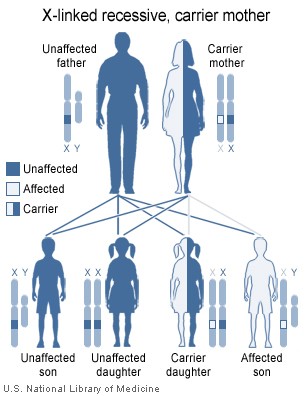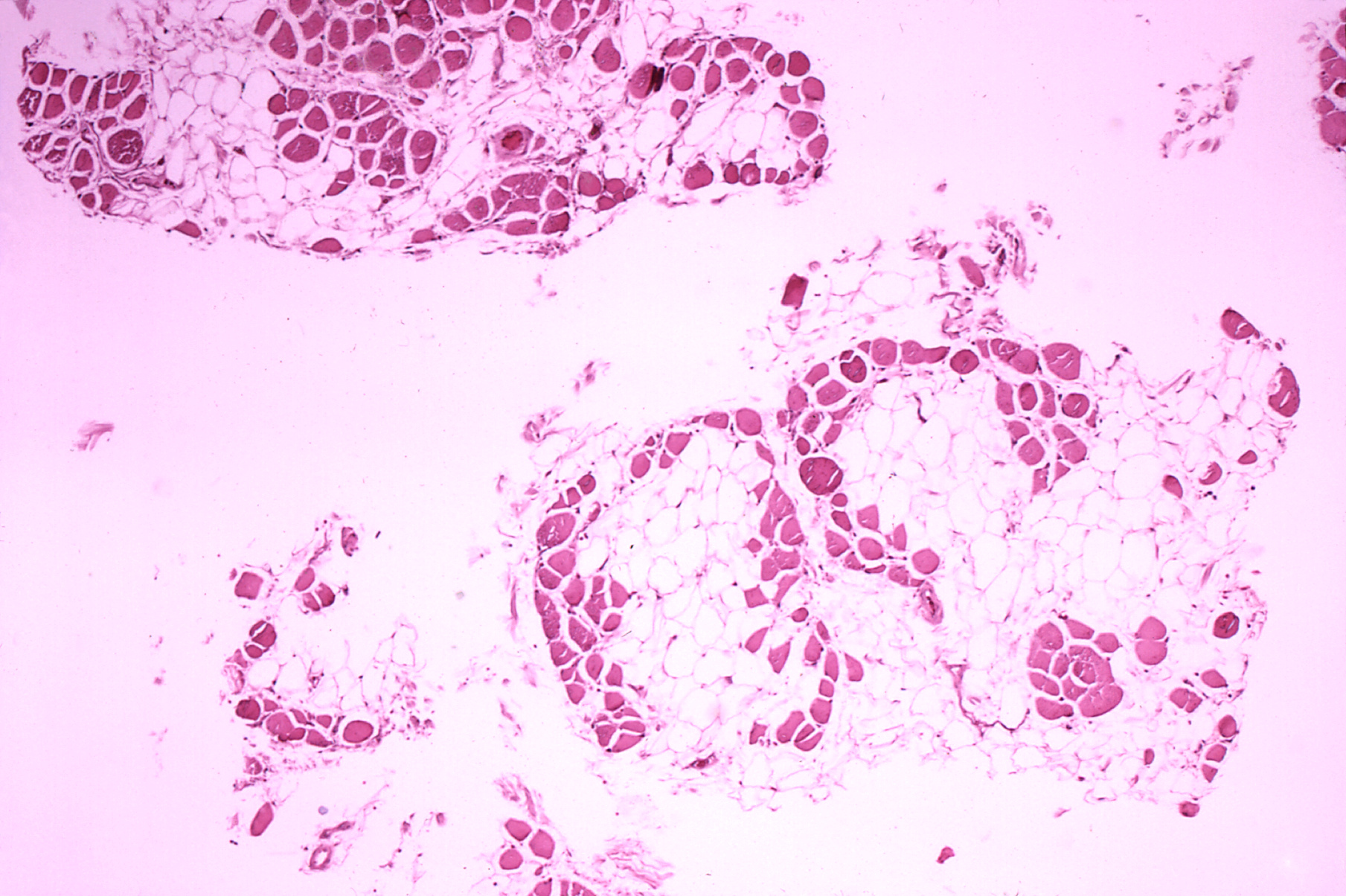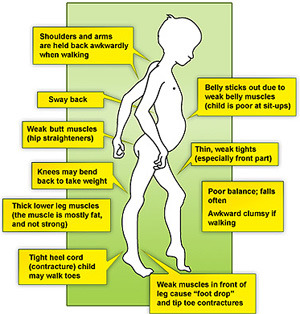Duchenne Muscular Dystrophy
A Genetic Disorder:
A Genetic disorder is a disease that is caused by an abnormality or defect in a being's DNA. Sometimes it is a small mutation in one gene that is added or subtracted from a whole chromosome or set of chromosomes. Changes in genes can sometimes occur, but most cells are capable of fixing this. When this doesn't happen that is when a genetic disorder can occur. a mutation would have to occur in an egg cell or the sperm cell, for inherited diseases to be passed down through generations, Some disorders are inherited while others are cause by habits. If a gene is “dominant”, only one gene has to be present. If the gene is recessive, both genes need to be present. Whether the child has a dominant gene v.s a recessive gene depends on genes of the parents. If the parents both give a dominant gene the child will be homozygous dominant, if they both give a recessive gene the child is homozygous recessive, and if a recessive gene and dominant gene are given the child is heterozygous. Each parent gives a gene to the child. The genetic build p of the child determines if it will have that genetic disease. If the disease is inherited than one of the parents must have the disorder or be a carrier of that gene.
Duchenne Muscular Dystrophy:
Duchenne Muscular Dystrophy or DMD is a recessive type of Muscular Dystrophy. This disease results in muscle degeneration and over time death. DMD affects about 1 boy in every 3 600 every year. Duchenne Muscular Dystrophy is cause by a "mutation" or "abnormality" in the "dystrophinegene". The Dysrophinegene is located on a humans X chromosome, it is a very important piece in the structure of muscle tissue, it provides stability to the "dystroglycan complex" of the cell membrane. Both male and female can have this disorder but it is most commonly found in men and if found in women the symptoms are not very clear.



http://en.wikipedia.org/wiki/Duchenne_muscular_dystrophy http://en.wikipedia.org/wiki/Duchenne_muscular_dystrophy http://zygoma.tumblr.com/post/12047010182/duchenne-muscular-dystrophy-duchenne-muscular
Diagram of X linked recessive heredity. Image of people with DMD muscle tissue. Symptoms of DMD.
History:
Duchenne Muscular Dystrophy was discovered by the physicians Giovanni Semmola in 1834 and Gaetano Conte in 1836. DMD is named after a French neurologist Guillaume Benjamin Amand Duchenne in his book; he described and detailed a situation where a boy had this condition. Duchenne was the first person who did a biopsy on a person. To help, obtain tissue for examination.
Symptoms:
Symptoms usually occur before the age of 6 and can appear even at infancy.
Some symptoms are:
Awkward walking, stepping, or running.
Frequent falls
Fatigue
Muscle contractures of achilles tendon and hamstrings impair functionality because muscle fibers shorten and fibrosis occurs in connective tissue
Progressive difficulty walking
Muscle fiber deformities
Eventual loss of ability to walk (often by the age of 12)
Skeletal deformities (often scoliosis)
Treatments:
There is no cure for DMD. But doctors and researchers are working to try and find one. Scientists are trying to correct the defective genes that cause DMD. But exercises and physical therapy can help patients with DMD avoid stiffening of muscles which can lead to joints locking and severe pain. Side effects for these treatments can be painful due to the exercises and physical therapy. Since there is no medication for DMD there are not any severe side effects.
Gene Therapy:
Gene Therapy process in which genes are altered. Nothing more than research has been furthered this topic, because it is still a fairly new topic. Research began in 1990, and has continued since. Gene Therapy is set up to alter harmful genes, and replacing them with healthy, non-mutated genes. Research in this topic has some definite issues for example: scientists cannot know all genes that must be altered in every case. Also some people could attempt to change genes that could make their offspring smarter, taller, or even appearance. Basically making their children "robots". In 2007, researchers including Jerry Mendell, did the world's first gene therapy "trial" for Duchenne Muscular Dystrophy. Scientific research was published on 15 April 2010. According to the research it is possible to repair genes associated with DMD. Biostrophin is a "delivery vector" for gene therapy to help treat DMD as well as Becker Muscular Dystrophy.
Controversies:
There are no controversies in regards to DMD. But there are controversies for genetic disorders in general. Since a lot of disorders can be tested or detected before birth, people can choose whether they want to have a baby or to keep the pregnancy. Also you can be tested yourself for a disorder and then it can affect the way your life or some choose not to know. But some people just live without any "fear" of a disorder.
Bibliography:
http://www.nlm.nih.gov/medlineplus/ency/article/000705.htm
http://mda.org/disease/duchenne-muscular-dystrophy
http://en.wikipedia.org/wiki/Duchenne_muscular_dystrophy